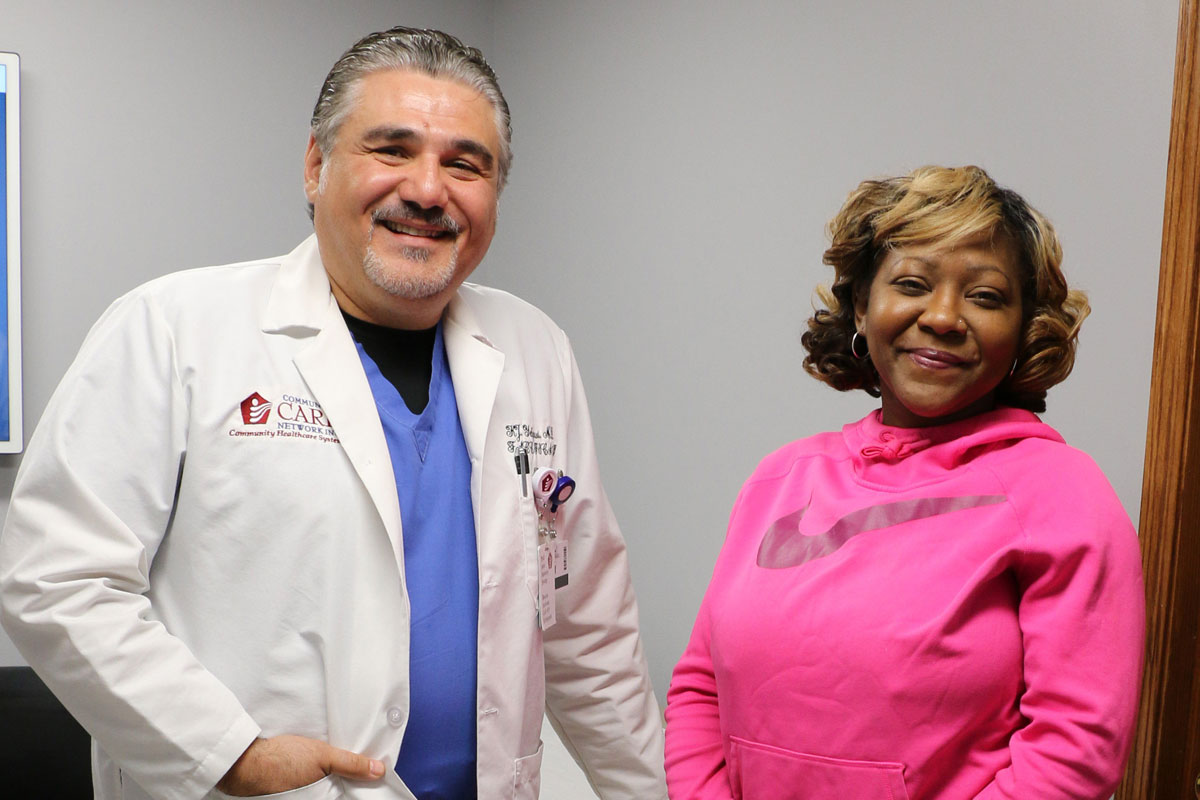 In recognition of February as American Heart Month, the public is invited to attend the 2017 Hearts of Hope tree lighting ceremony at 6:15 pm, Wednesday, Feb. 15, in the West Patient Tower Lobby of St. Mary Medical Center, 1500 S. Lake Park Ave. in Hobart. Cardiovascular patient Lachunda Young will share her personal story and light a tree that shines in honor of those whose lives have been affected by cardiovascular disease.
In recognition of February as American Heart Month, the public is invited to attend the 2017 Hearts of Hope tree lighting ceremony at 6:15 pm, Wednesday, Feb. 15, in the West Patient Tower Lobby of St. Mary Medical Center, 1500 S. Lake Park Ave. in Hobart. Cardiovascular patient Lachunda Young will share her personal story and light a tree that shines in honor of those whose lives have been affected by cardiovascular disease.
The annual Hearts of Hope campaign raises funds for Cardiovascular Research at the hospitals of Community Healthcare System, helping to improve local access to treatment options only available through research. The ceremony will feature remarks by St. Mary Medical Center Cardiologist Kais Yehyawi, MD, and CEO Janice Ryba. Prior to the ceremony, Yehyawi will give an educational seminar that addresses current advances in cardiovascular research.
Young’s journey with heart disease began in 2011. Experiencing shortness of breath, she found herself in the emergency room and was soon diagnosed with dilated cardiomyopathy, a weakness of the heart muscle that affects its ability to pump blood. This weakness led to extreme heart failure, so Young was soon outfitted with an implantable defibrillator and placed on medication.
“As a hairdresser, I’m on my feet most hours of the day,” she said. “While the defibrillator and medications helped, I was still very limited in my daily activities and still wasn’t feeling well. I found myself in and out of the hospital on a regular basis, due to my symptoms.”
A heart transplant was considered but Young didn’t quite meet all the required criteria. When the FDA approved a new monitoring device, the CardioMEMS™ HF System, Yehyawi knew they had a solution.
“CardioMEMS is a game changer for managing advanced chronic congestive heart failure (CHF) patients,” he said. “CHF causes retention of fluid in the body due to heart weakness. The device monitors the pressure in the lung and heart caused by the fluid build-up, sending readings wirelessly to our office throughout the week. We can catch any issues early, sometimes even two to three weeks before a patient develops symptoms.”
The CardioMEMS implant was placed in Young’s pulmonary artery through a minimally invasive procedure at St. Mary Medical Center. To capture the readings, Young lays on a pillow with a built-in antenna that gathers the information and transmits to a secure website. Dr. Yehyawi can then monitor the trends and recommend adjusting Young’s therapy, as needed.
“Traditionally, heart failure patients on medication were given a standard dosage and monitored over a period of time, to see if adjustments were needed,” said Yehyawi. “Now we can personalize the treatment from the start and continually make adjustments, even on a daily basis, to suit individual patient needs. This cuts down on the number of hospital admissions for CHF patients.”
For Young, CardioMEMS has made a world of difference.
“I feel 100 percent better,” she said. “Dr. Yehyawi’s office regularly communicates with me, to let me know how to adjust my medications. CardioMEMS has kept me out of the hospital and improved my quality of life. Dr. Yehyawi and his team have taken great care of me.”
“With all of the advances being made in current CHF technology, we are helping people live better lives, right here in Northwest Indiana,” said Yehyawi.
For more information on cardiovascular research at the hospitals of Community Healthcare System: St. Mary Medical Center in Hobart, Community Hospital in Munster, or St. Catherine Hospital in East Chicago, visit comhs.org/HeartsofHope.
